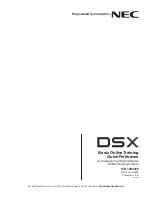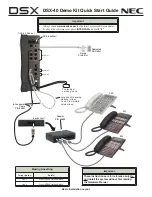
MERLIN LEGEND Communications System Release 5.0
Feature Reference
555-650-110
Issue 1
June 1997
Applications
Page I-42
Integrated Solution II
I
Feature Interactions
9
Account Code Entry
CAS IS II associates account codes entered by users before or during
calls with accounts and individuals; they appear on CAS IS II reports.
Coverage
An inside call on a VMI port that transfers to an inside extension does not
go to coverage. It continues to ring at the inside extension.
If a sender programs the telephone so that only outside calls are sent to
coverage, calls received on ICOM or SA buttons are not sent to voice
mail.
In Release 2.0 and later, outside calls that would normally proceed to
AUDIX Voice Power as coverage calls do not do so if the telephone that
sends the call to Group Coverage has activated Coverage VMS Off. No
special action is needed in AUDIX Voice Power programming to activate
this feature.
Group Calling
With integrated VMI ports in AUDIX Voice Power, mode codes identify
coverage calls that overflow from one calling group to another calling
group. As a result, the overflow calling group’s number appears in the
Called Party field of the mode code.
Leave Message
If a Leave Message notification is left in a mailbox in a system with heavy
VMI traffic, the user may have to dial out manually for messages.
In Release 2.0 and later, when AUDIX Voice Power sends a Leave
Message notification to an extension, the system identifies the voice mail
system as the sender of the message. As a result, when the voice mail
subscriber uses the Return Call feature, the call goes to any available
voice mail port, not just to the specific port that generated the message.
This improves access by reducing the chance of getting a busy port.
Night Service
If the AVP Automated Attendant handles only after-hours calls, a
phantom extension (an unused extension or vacant port) must be
programmed as a member of a Night Service group associated with the
system operator. In turn, this phantom extension is covered by a calling
group with integrated VMI ports as members. If an incoming call is not
answered in the programmed number of rings, the control unit sends the
call to the calling group with the VMI ports. Because of prior
programming, AVP recognizes the call to be from the phantom extension
and provides Automated Attendant service rather than the usual Call
Answer service.
SMDR
CAS IS II uses the call information provided by the system’s built-in
SMDR feature to process calls. There are two system formats for SMDR:
Basic and ISDN.
















































